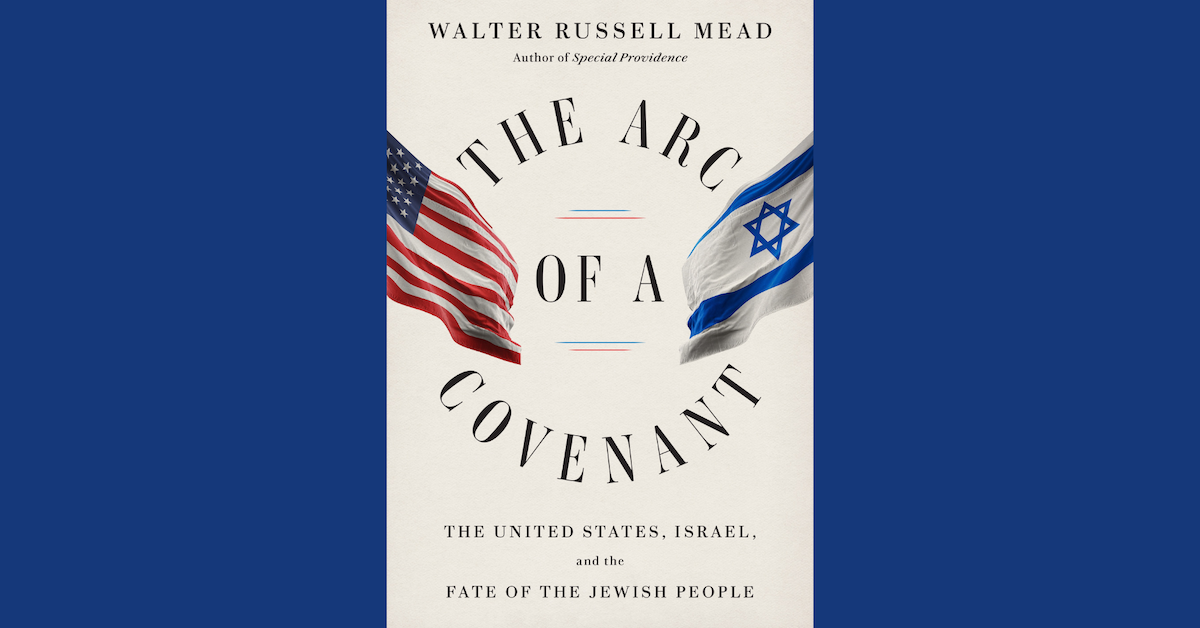Aug 26, 2022 By: yunews

Walter Russell Mead | Knopf | 2022
Reviewed by Stu Halpern
In The Arc of a Covenant: The United States, Israel and the Fate of the Jewish People, The Wall Street Journal’s Walter Russell Mead offers a revisionist history of the relationship between America and the Jewish State. As Mead writes, “The conventional narratives about the relationship were often off base and sometimes flat wrong.” As he argues, long before modern Jewish political Zionism, non-Jewish Americans looked toward Jewish restoration in the Holy Land. In fact, how Americans feel about Israel has often been less about Jews and more about what they perceive America’s values to be, what role they think their country should play in the world and their own (usually Christian) religious faith. In one of the book’s main counterintuitive arguments that rings true, Mead notes that modern Israel has served as a religiously edifying testimony to the faith of millions of American Christians well versed in the Bible. In other words, while Christians helped and continue to help Israel’s modern revitalization, Israel, in turn, has actually helped strengthen Christians’ religious commitment. Of course, as the Straus Center has argued in its books Proclaim Liberty Throughout the Land: The Hebrew Bible in the United States and Esther in America, and as Mead recounts, America since the Pilgrims and the Puritans turned to the model of ancient Israel to shape their own communities and political ideology (there were only around 1,000 actual Jews in America during the Revolutionary period). Countering the commonly heard arguments that much of American foreign policy is influenced by Israel, Mead argues that the U.S.-Israel relationship isn’t and never has been the most important relationship in America’s foreign policy and reminds his readers that Israel is far from America’s most valuable trading partner or important ally. He cautions against looking at the relationship between the two countries in a vacuum and not within its proper place—part of the endlessly complex web of geopolitics and strategic interests. He also slays some sacred cows, making the case that Joseph Stalin’s arms deliveries were more significant in Israel’s birth than Harry Truman seeing Israel as a means of keeping his Democratic Party united, and France as more crucial to Israel’s survival in its first 20 years than the U.S. He notes that it clearly wasn’t "Jewish pressure" that "engineered the vote" for Israel in the UN, since "one wonders how the world’s Jews, powerless a decade before to stop the rise of Hitler in Germany…powerless to force a war-weakened Great Britain to toe the Zionist line, had suddenly gained the awesome power to manipulate the United Nations behind the scenes." Mead, of course, spends ample time on “The Great MacGuffin and the Quest for the Holy Grail,” i.e., the Middle East peace process. As he notes, though not great headway was made in recent decades prior to the Abraham Accords, "Presidential trips to the Middle East always led to favorable press coverage, underlining the difference between a president and lesser mortals who competed against him politically." He also adds that those pushing for progress view the end goal as the establishment of some sort of universal liberal order that would actually feel foreign to the region's native inhabitants, and that on some level, “peace is already here” since “most of the time, Israelis and Palestinians are not actually shooting at one another.” Furthermore, Jews are understandably skeptical of others telling them how to live in security and dignity, noting that Herzl’s argument was that only the sovereign power of a Jewish homeland offers real hope for survival. Readers interested in Middle East history, Zionist history and U.S. foreign policy will gain much from Mead’s learned and well-argued work. The book’s subtitle notwithstanding, the actual fate of the Jewish people, of course, remains ultimately in God’s hands. To read more Straus Center book reviews, click here. You can learn more about the Straus Center and sign up for our newsletter here. Be sure to also like us on Facebook, follow us on Twitter and Instagram and connect with us on LinkedIn.
